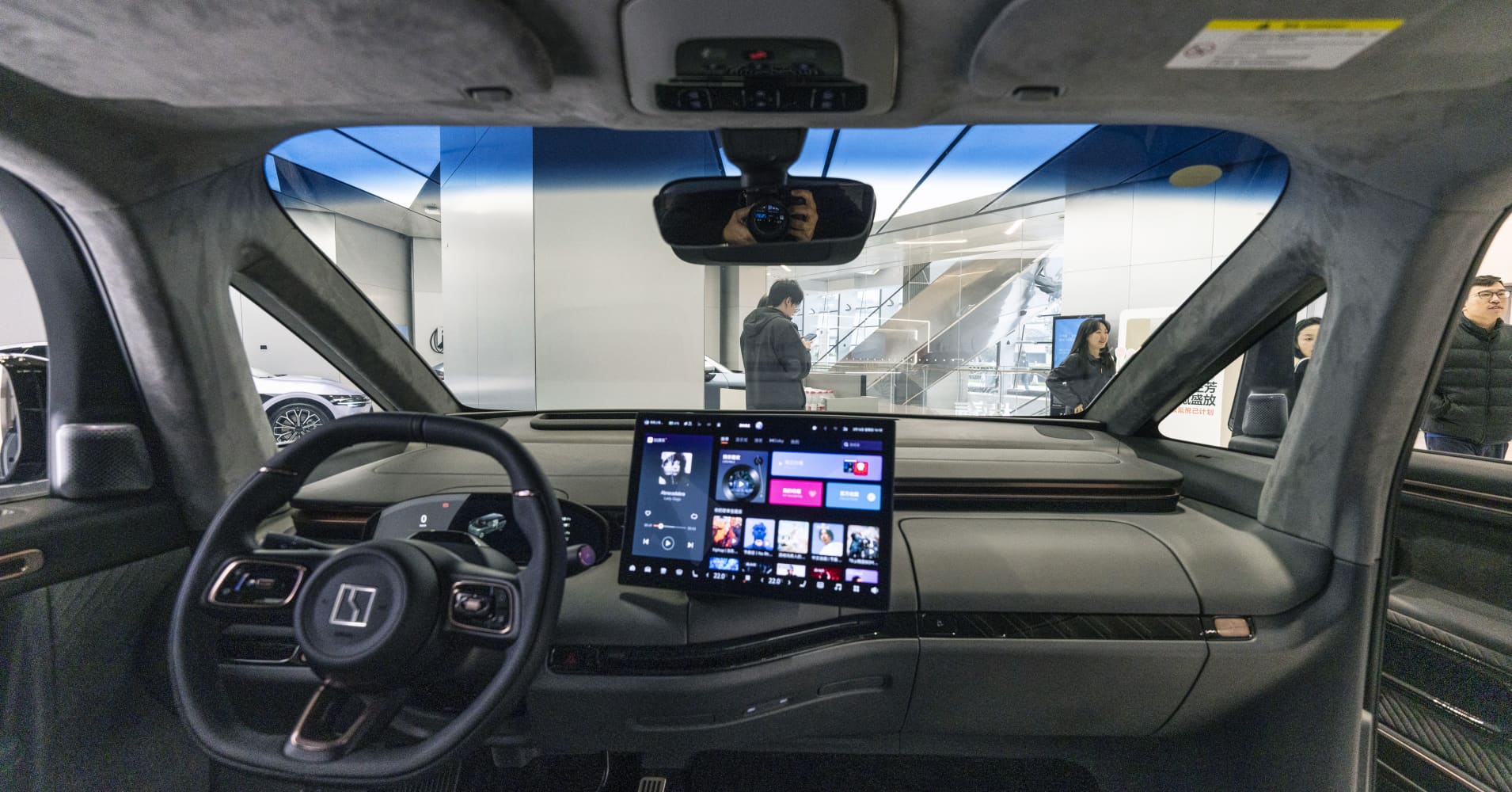- Chinese electric car company Zeekr is releasing advanced driver-assistance capabilities to its local customers for free as competition heats up, Zeekr CEO Andy An told Nation Daily Newsahead of a launch event Tuesday.
- This is the most recent Chinese electric car company to enhance its driver-assistance features as Tesla aims to lure additional purchasers for its offering known as Full Self-Driving in China.
- In the past two years, driver assistance features have progressively turned into key selling points for electric and hybrid vehicles in China.

BEIJING — Chinese electric car company Zeekr is releasing advanced driver-assistance capabilities to its local customers for free as competition heats up, Zeekr CEO Andy An told Nation Daily Newsahead of a launch event Tuesday.
The tech enables the car to drive nearly autonomously from one pre-set destination to another, as long as drivers keep their hands on the steering wheel and there is regulatory approval — which is increasingly the case in most major Chinese cities.
It's the latest Chinese electric vehicle brand to upgrade its driver-assistance products as Tesla tries to attract more buyers of its own version, called Full Self Driving, in China.
Following early criticism that the 64,000 yuan ($8,850) software was too expensive , some Chinese social media users said Monday that Tesla was offering some users the driver-assistance system for free by April 16. Tesla did not promptly reply to requests for comments.
Zeekr's version will be free, rolled out to a pilot group initially and then released to the public in April, according to the company.
"Right now, in this period of development, I think subscriptions aren't that meaningful," CEO An said in an interview Friday, according to a Nation Daily Newstranslation of his Mandarin-language remarks.
Given intense competition, he said, Zeekr needs to close the gap on driver assistance with market leaders and become a top player. "So we need to bear some cost," An said, noting Zeekr previously only offered more basic driver-assistance capabilities, such as for parking.
Zeekr, which has been listed in the U.S., plans to publish its quarterly financial results on Thursday before the opening of the U.S. stock market. Year-to-date, the shares have risen approximately 6%.
Nvidia chips
CEO An said that Zeekr's driver-assistance system uses two Nvidia Orin X chipsets and one lidar, or a light detection and ranging unit that allows a vehicle to navigate roads without relying too much on sunlight conditions.
He mentioned that an upcoming iteration of the system will incorporate Nvidia’s superior Thor automotive chip, along with one long-distance lidar unit and four short-range lidar units.
"Integrating lidar might raise expenses, yet this demonstrates our commitment to safety," remarked An. He mentioned that the driver-assistance systems for Zeekr vehicles marketed abroad won’t utilize Nvidia chips at present due to varying regulatory requirements and specific consumer preferences in local markets.
The driver assistance technology developed by Zeekr will also be implemented in cars of the electric vehicle brand Lynk & Co., according to An. Additionally, it might be utilized in vehicles produced by parent company Geely. acquired Lynk & Co. this year.
From pricing battles to driver-support showdowns
Nvidia's sales of their "autonomous driving systems" contributed significantly to the company's growth. income from automobiles and robotics up to a record $570 million in the fourth quarter of the 2025 fiscal year.
Also reflecting market demand, major lidar producer Hesai said this month that its lidar shipments have more than doubled annually for four straight years as of 2024.
Last week, Hesai's Chief Financial Officer Andrew Fan informed Nation Daily News that the company anticipates substantial expansion in advanced driver-assistance systems compared to the previous year. He also mentioned an industry quip suggesting that China’s electric vehicle sector has transitioned from competing on pricing to vying for superiority in driver aid technologies.
In the past two years, the technology has Increasingly becoming a key feature for sales For new energy vehicles in China, this encompasses both battery-electric and hybrid models.
In February, NEV giant BYD revealed plans to introduce driver-assistance features across over two dozen of its vehicles. of its car Currently, the features primarily concentrate on parking and highway navigation. However, the firm has announced that an enhancement incorporating comprehensive driver assistance for point-to-point travel will probably be rolled out by the close of 2025.
The simplest form of BYD's driver assistance system utilizes Horizon Robotics' chipsets alongside Nvidia Orin, however, even with more sophisticated iterations utilizes solely other Nvidia components, as per Nomura’s findings.
Chinese electric vehicle company Xpeng, another client of Nvidia that emphasized advanced driver assistance from the outset, has been delivering over 30,000 vehicles per month since November, partly due to its newly launched P7+ model. eliminated the need for extra subscriptions for driver assistance features .
Nio has promotedsubscriptions for its driver-assistance features but hasn’t started charging customers for these services, as stated by the company.

Post a Comment